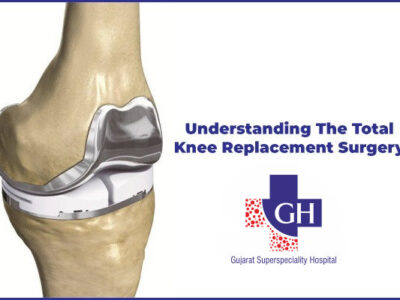
Knee replacement is one of the most common orthopaedic surgeries performed nowadays. It is also called knee arthroplasty; it is a surgical procedure to resurface a knee damaged by arthritis. Most people experience reduced or eliminated knee pain, increased mobility and overall improved quality of life.
Knee replacement surgery is where portions of the bones that form the knee joint are removed and replaced by artificial implants. It is generally performed to relieve the knee pain and stiffness that is caused by osteoarthritis. Most people who get this surgery have severe knee arthritis wherein the cartilage is damaged and worn away. This causes pain, stiffness, instability and changes in the bone alignment.
TYPES OF KNEE REPLACEMET
There are mainly 4 types of knee replacement:
- Total knee replacement- it is a surgical procedure where the entire joint is replaced with artificial surfaces
- Partial knee replacement- it is a surgical procedure where only the damaged compartment of the knee is replaced.
- Kneecap replacement (patellofemoral arthroplasty)- it is a surgical procedure involves replacing the under surface of the kneecap and its groove if these are the only parts affected by arthritis.
- Complex or revision knee replacement- it may be required if one is having second or third replacement in the same knee.

PROCEDURE (total knee replacement)
Firstly, an incision is made to the knee and the patella is moved to the side. If any bone spurs are present, as present in osteoarthritis, it will be removed. Next, the menisci present between the femur and the tibia are removed, as are the anterior cruciate ligament (ACL) and in some cases, the posterior cruciate ligament (PCL). In some cases of knee replacement, the PCL is retained.
During the crucial part of the surgery the surgeon removes cuts and removes the cartilage and some bone from the upper part of tibia and lower portions of femur. The femur and tibia are then capped with metal implants to create new articulating surfaces for the joint. The surface of the femoral component mimics the shape of the original femoral condyles.
Finally, the various layers of the tissues are repaired with dissolvable sutures and the skin incision is closed with sutures or surgical staples. A bandage will be wrapped around the knee and the patient is taken to recovery.
PROCEDURE (partial knee replacement)
A partial knee replacement is also known as uni-compartmental knee arthroplasty or unicondylar knee arthroplasty. In this procedure the damaged cartilage and bone are removed and replaced only in one diseased compartment of the knee. This differs from total knee replacement where bone and cartilage from the entire joint is replaced.
Partial knee replacement is suitable for those people who experience arthritis only in one compartment of the knee joint rather than throughout the joint. It can also provide relief from pain and stiffness in some people who have medical conditions that make them a poor candidate for total knee replacement surgery.
RISKS OF THE PROCEDURE
As with any surgical procedure, complications can occur. Some possible complications may include-
- Bleeding
- Infection
- Blood clots in the legs or lungs
- Loosening or wearing out of the prosthesis
- Continued pain or stiffness
The replacement knee joint may become loose, be lodged, or may not work the way intended. Nerves or vessels in the area of surgery may be injured. There may be risks depending on specific medical conditions.
WHEN TO CONTACT A KNEE SURGEON
Orthopaedic surgeon helps to diagnose and treat various conditions that affect the knee joint which includes degenerative conditions, ligament injuries, muscle tears and fractures. Dr. Bhavin Agrawal and Dr. Vivek Patel are the best knee replacement surgeon in Vadodara who can help you to manage your knee problems efficiently.

